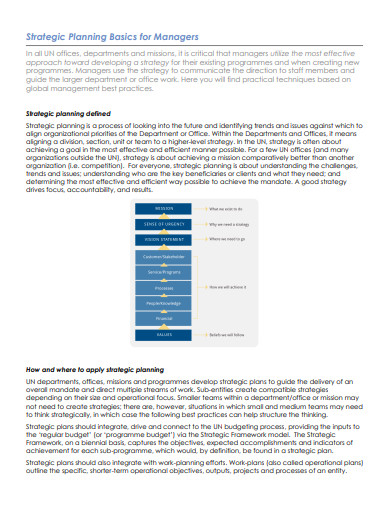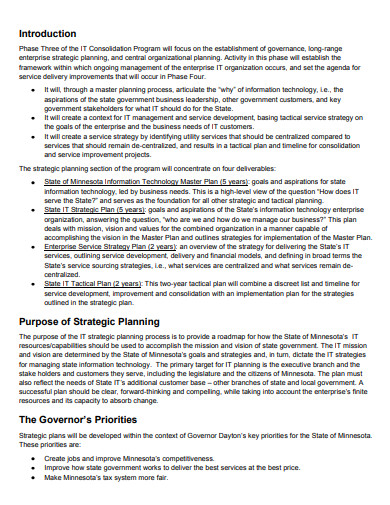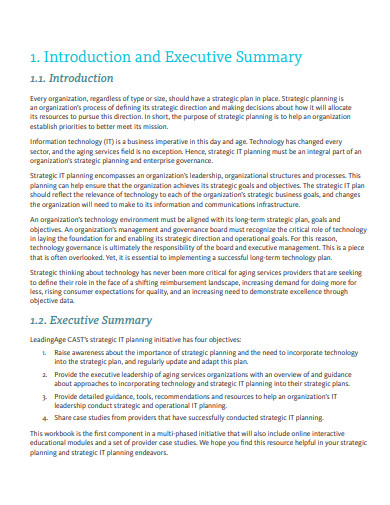Businesses and organizations all over the world recognize the importance of having a detailed plan. Furthermore, they should be aware of the strategies they intend to employ both within and outside of their businesses and organizations. It ensures that everyone in the organization is on the same page and prepared for any situation that may arise during the development and implementation of strategies that will benefit the organization. The ability to put together a detailed plan is extremely important for management in order to avoid wasting time and money on mistakes that could have easily been avoided. They will save time and money by not wasting their time and money on things that could have been avoided. In this organization, we have something we refer to as a “strategic plan.” However, when a well-written strategic plan brings all of them together, it ensures that they are cohesive and that the project is completed, resulting in tangible results being obtained. Those in charge of running a business use documents like this one on a regular basis. These documents can be extremely useful if you want to make changes that will have a significant impact on the way your company operates.
Strategic plans will help you be ready for anything that might happen at work or during the week. Make sure everyone working on the project is on the same page with you. Put certain strategies in place for your business, and make sure you do it right and quickly. It could be bad for your company if the strategies you plan to use don’t work, or if your progress stops in the middle of putting them into place or making them. If you want to make the most of the document you’re about to write, look at these high-level strategic plan examples that we’ve put together for you below. Seeing how the document looks and what it does will help you better understand the document and how it works. You can use these examples of strategic plans to help you write a plan for your own organization after you’ve tried to figure out what the document should look like first.
3+ High-Level Strategic Plan Samples
1. High-Level Strategic Plan

2. High-Level Strategic Plan for Managers
3. IT High-Level Strategic Plan
4. IT High-Level Strategic Plan Example
What Is a High-Level Strategic Plan?
Strategy and implementation plans are documents that you can use when you work for a company to show the specifics, strategies, and outlines for both the development and implementation of your company’s strategies. However, strategic plans can be used for a variety of purposes, and they are not limited to a specific industry. As long as you have a business concept that you intend to pursue and complete, developing a strategic plan is the most effective first step that you can take to get started. A business’s road map is a list of steps and actions that must be completed before the organization can begin implementing strategies. Because of the factors listed above, strategic plans are typically more than a few pages in length. However, in this instance, the plan will be contained within a single page. After reading your strategic plan, it is critical that everyone in your organization understands what they need to do next in order to achieve success. It should be extremely detailed and clear in order to ensure that they understand what they need to do after reading your plan. The most important characteristic of a strategic plan is that it is simple to comprehend. This is especially true now that you are attempting to condense a large amount of information into a compact document.
How To Write a High-Level Strategic Plan
The process of developing a strategic plan entails much more than simply jotting down a list of tasks and activities on a piece of blank paper. The first step is to ensure that your objectives are clearly defined and understandable to others. Then you must write down the steps you must take to get there, and then you must explain and demonstrate them in a way that everyone in your organization can comprehend. This can be accomplished by following a few simple steps that you should remember and keep in mind. These steps will be discussed in greater detail in the following section of this page.
- Define your goal
Preparing your strategic plan should not be undertaken unless you have a clear understanding of what you wish to achieve and how you intend to achieve it before you begin. When you begin something without a clear vision of what you want to achieve, you are setting yourself up for failure. The first thing you should do is assess the situation and become acquainted with the people and environments in which you will be working. Making sure your goals are completely attainable and doable is also important, which is why you should use strategic criteria such as the SMART framework to ensure this. - List down the steps
When you start a project, write down the steps you will take to reach your goals. Order now, but don’t worry about it yet. Please tell us what your plans for the next few days will be. During the start of the project, there won’t be any extra tasks or side projects that will get in the way. To write a plan, it’s very important that you write down everything that needs to happen. Tasks that need to be done should have enough information and parameters so that when they are done, they are done in the way that you want them to be done. - Prioritize tasks and deadlines
Making a list of what needs to be done in order is easy if you follow the steps that need to be taken. You should start with the steps that take the most time and money and then work your way down. Any tasks that must be done before you can move on should be kept in mind. - Set milestones
A small number of small victories add up over time, which leads to bigger victories in the long run. Because the deadline is a long time away, your team will have something to look forward to. Sometimes, you can give your team a pat on the back to cheer them up and keep going. This can also boost morale and make them want to keep going. - Identify the resources that you need
Check to see if you have all of the things that you need before you start working on your project. Make sure you start putting together all the things you’ll need for your project long before you start it. If you want to meet any deadlines that you have set for yourself, you need to stay focused on the project so that you can. Make sure you don’t get sidetracked in the middle of a project because you’re running low on materials and supplies. - Visualize your plan
Everything you need to know about how to use your strategies and how to set rules for how your strategies should be used should be in your action plan. Think about the plan in action to see if it works as well as it should. Learn more about the plan and see if you can do your job. - Monitor, Evaluate, Update
Everything in a plan doesn’t end when it’s written down. It’s best to keep your action plans up to date so that you can get the best results. Over time, they will change and adapt. It will grow and change over time, and you can change it at any time.
FAQs
What are the 4 components of strategic planning?
- Context
- Long-term plan
- Short-term plan
- Implementation plan
What is a good strategic plan?
An effective strategic plan brings the vision together and makes it easier to measure how well things are going. Strategies are a lot more specific than the organization’s mission and vision values. They help map long-term plans to goals and specific steps that can be taken right away.
What are examples of strategic actions?
- Planning
- Ordinance
- Community practices
- Incentive
In order to finish and finish any project you’re working on, you need to have a plan of action in place. It gives your idea a fighting chance. If you follow the steps and templates that we’ve given you in this article, we think you’ll be able to write a good action plan on your own in the future.
Related Posts
FREE 4+ Bakery Sales Plan Samples in PDF MS Word | Apple ...
FREE 6+ SEO Content Strategy Samples in PDF
FREE 21+ Sample HR Strategy Templates in PDF, Word
FREE 10+ Policy Implementation Plan Samples [ Environmental ...
FREE 10+ Strategy Memos in MS Word Google Docs
FREE 6+ SEO Marketing Strategy Samples [ Content, Digital ...
FREE 9+ Business Requirement Document Samples in MS Word ...
FREE 5+ Procurement Management Plan Samples in PDF DOC
FREE 14+ Sample Marketing Plan Outlines in MS Word PDF
FREE 12+ Construction Action Plan Samples in PDF MS Word
FREE 10+ Disciplinary Action Plan Samples [ Progressive ...
FREE 5+ Forex Risk Management Samples in PDF DOC
FREE 10+ Sample Financial Plan Templates in MS Word PDF | Excel
FREE 10+ Executive Development Plan Samples [ Leadership ...
FREE 8+ Sample Territory Plan Templates in PDF MS Word | PPT ...



